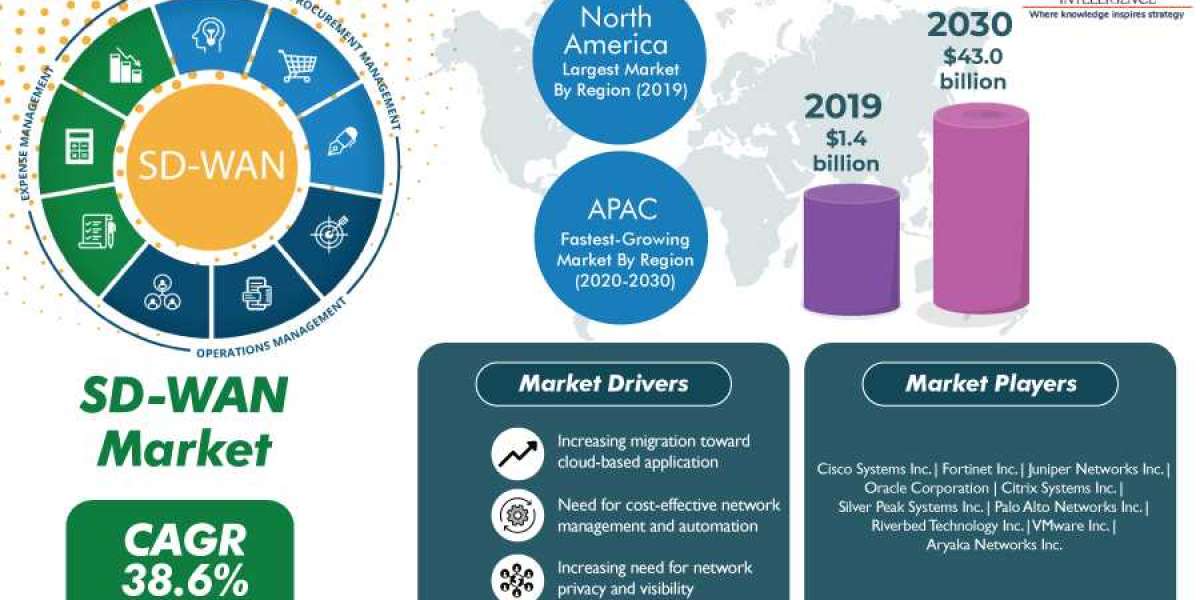The global software-defined wide area network (SD-WAN) market generated a revenue of $1.4 billion in 2019, and it is predicted to attain a value of $43.0 billion by 2030. Furthermore, the market will progress at a CAGR of 38.6% between 2020 and 2030. The market is being driven by the growing demand for a simplified enterprise network architecture, requirement for a cost-effective WAN automation and management, surging internet penetration, and the rising popularity of the bring-your-own-device (BYOD) policy at workplaces.
Additionally, the growing adoption of big data and internet of things (IoT) is also fueling the expansion of the market across the world. As per the Microsoft IoT Signals Report 2019, out of the total number of respondents (3,000), 85% adopted IoT and nearly 75% are working on various IoT-based projects. However, there are many challenges related to big data and IoT such as high implementation costs, data privacy, data handling and management issues, security problems, and inadequate knowledge.
The SD-WAN market is also classified, on the basis of industry, into IT telecom, retail, manufacturing, healthcare, banking, financial services, and insurance (BFSI), and government categories. Out of these, the IT telecom category led the market in 2019. This was credited to the rapid digitization in the industry and the large-scale usage of mobile devices at workplaces.
Globally, the SD-WAN market will exhibit the fastest growth in Asia-Pacific (APAC) in the forthcoming years, as per the estimates of the market research firm, PS Intelligence. This is ascribed to the surging IT spending, enactment of favorable government initiatives in Japan and China regarding 5G deployment, and the rapid digital transformation in industries in the region.
Hence, it is safe to say that the market will surge in the coming years, primarily because of the growing adoption of the IoT and big data, rising popularity of cloud platforms, increasing digitization in various industries, and the mushrooming penetration of the internet and smartphones across the world.








